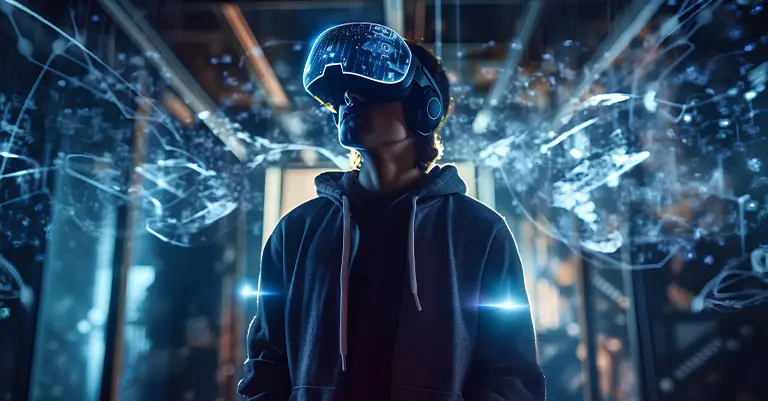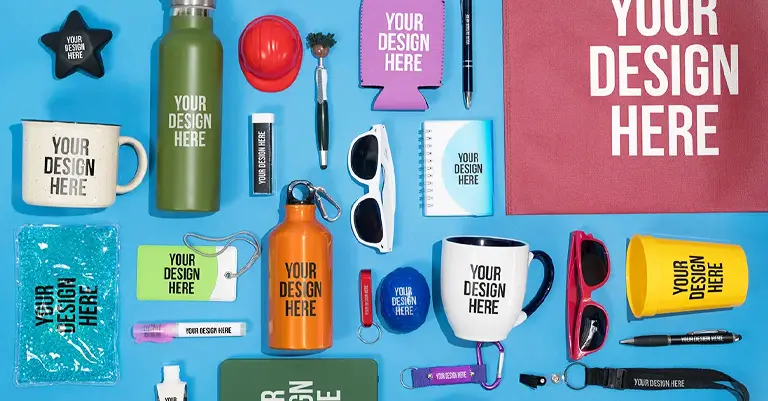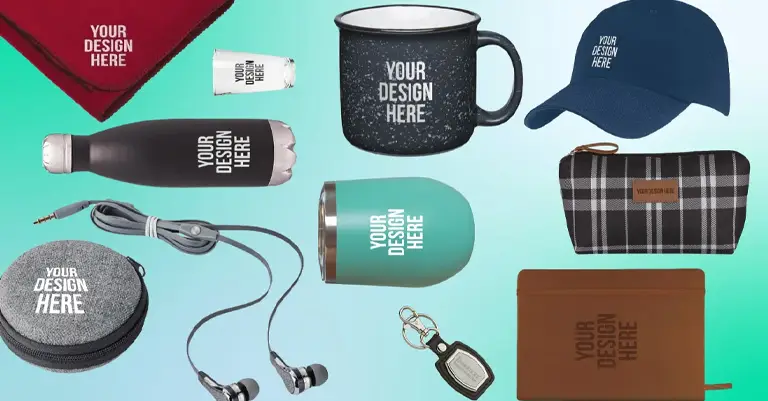Virtual Reality (VR) offers a digital world that people can get into. Furthermore, it provides either true-to-life or completely made-up experiences. It’s changing the game for brands by letting them connect more closely with their audience through interactive and memorable experiences. VR goes beyond just showing off a product. It lets people experience it in a fun and unique way. This helps brands grab attention, making viewers active participants. With VR, brands can build strong emotional ties and create standout moments, making it an essential strategy for standing out in a crowded market.
The Benefits of Virtual Reality for Brands
Enhanced Customer Experience
Virtual Reality transforms how customers experience brands by taking them into immersive, digital worlds. This technology makes every interaction unique, from virtual home tours to test-driving cars that aren’t yet available or exploring holiday spots in 360 degrees. VR goes beyond what regular screens can do, making each experience rich and memorable.

Improved Brand Engagement
VR connects customers to brands by letting them be part of the story through interactive and fun experiences. This deeper involvement keeps customers engaged for longer, boosts their interest, and gets them more involved. Instead of just getting information, customers experience the brand’s story firsthand, which makes them understand and appreciate the brand more. This active engagement increases brand loyalty and memory, showing how VR creates strong customer relationships.
Unique Competitive Edge
Using VR technology gives brands a unique edge in a crowded market. It shows that a brand is innovative and committed to offering the newest experiences, which attracts customers who love technology and new trends. By adopting VR, brands show they’re industry leaders, using the latest tech to improve customer interactions. This draws more attention to the brand and raises the standards for competitors, marking it as progressive and focused on its customers.
How to Implement Virtual Reality in Your Branding Strategy
Implementing Virtual Reality (VR) into your branding strategy can seem daunting, but the right approach can significantly enhance how customers perceive and interact with your brand. Here’s how you can do it:
Identify Your Goals
Before starting with VR, it’s essential to know your goals. Ask yourself if you want to increase brand awareness, sell more, or provide special experiences for customers. Having clear goals helps you plan your VR approach and track its effectiveness.

Choose the Right VR Technology
There are many types of VR technology, from basic smartphone viewers like Google Cardboard to high-end systems like Oculus Rift or HTC Vive. Choose the one that matches your goals and how immersive you want the experience to be. Also, think about whether your audience can easily use these VR devices.
Create Engaging VR Content
Exciting content is the key to a successful VR campaign. It could be a virtual product demo, a story about your brand, or a game that draws in your audience. Good, creative VR content can make a substantial impact, so putting effort into creating phenomenal ideas is vital.
Integrate VR into Marketing Campaigns
VR should complement your current marketing activities. You can add VR experiences to your trade show display, brick-and-mortar locations, and online. Use social media, email, and other means to spread the word about your VR content to more people. This will improve your overall brand strategy and make all forms of engagement more effective.
Best Practices for Virtual Reality Branding
Focus on Storytelling
For VR branding to work well, it should tell a story that connects with your audience, not just show off your product or service. Good storytelling in VR helps build emotional ties, making the experience stick in people’s minds. Creating stories that pull users in helps them feel closer to your brand.

Ensure Accessibility
To reach more people with your VR, it is essential to make your content easy to access and use across different devices, from fancy VR headsets to simple mobile VR. Focus on making the VR experience user-friendly and easy to navigate. The simpler it is for everyone to access and enjoy your VR content, the better your VR branding will work.
Measure and Analyze Performance
Like any marketing plan, seeing how well your VR projects are doing is essential. Use tools that track how engaged people are, how long they interact, and how they behave in your VR settings. This information lets you figure out what’s successful and what needs work so that you can improve your VR content over time. Analyzing these details helps you make intelligent choices to boost your VR branding’s success and achieve the desired results.
Examples of Brands Excelling with Virtual Reality
Retail Success Stories
In retail, many brands use Virtual Reality (VR) to make shopping more immersive and fun. For example, IKEA lets customers see how furniture looks in their homes virtually before buying, combining usefulness with innovation. Fashion stores offer virtual fitting rooms so people can try clothes on digitally at home. These VR experiences make shopping more accessible and exciting, drawing in customers interested in using technology to shop.

Event and Exhibition Highlights
VR is revolutionizing events and exhibitions by making them more interactive and fun. For example, visitors can now take virtual test drives at car shows. This provides an exciting twist to exploring new models. VR also allows people to check out products and services at trade shows through virtual booths and simulations and even participate in talks or seminars from anywhere. This move to VR opens up these events to a global audience without travel, improving how brands connect with people and leaving a strong impression.
Overcoming Challenges in VR Branding
Technical Limitations
A big challenge in VR branding is technical issues like short battery life, poor image quality, and the need for powerful computers to run advanced VR programs. To address these problems, brands should keep up with new tech developments and adjust their VR content for the most common devices. Making VR experiences run more smoothly can also help ensure that these tech limits don’t spoil the user’s experience.
High Costs
Making high-quality VR content can be expensive, as can covering content creation and buying the needed VR gear. This might be tough for small businesses or those with tight budgets. To handle this, brands could start with smaller projects, prioritize good content over lots of content, and look for partnerships to help cover costs. Using cheaper VR platforms and tools that don’t need pricey equipment can also make VR more affordable.
User Adoption
Getting more people to use VR can be challenging. Not everyone has VR headsets; some might not want to try VR because it’s new or complicated. Brands can tackle this by making VR content that works on smartphones or through web browsers, so you don’t always need special headsets. Teaching people about VR’s benefits and how easy it is to use and offering free or cheaper trials can also help make more people open to and excited about using VR technology.
The Future of Virtual Reality in Branding
Trends to Watch
The future looks promising for VR in branding, with key trends set to change how brands connect with people. Combining VR with augmented reality and artificial intelligence makes experiences more customized and interactive. Social VR is growing, allowing users to interact in virtual worlds and helping brands build communities. There’s also a shift towards using VR for storytelling, offering deeper narratives that emotionally engage users. Plus, as VR becomes easier to get and use, its role in training and education is expected to grow, expanding how brands use VR.
Preparing for the Next Wave
To keep up with the fast-changing world of VR, brands must be active and think ahead. They should invest in the newest VR tech and find creative people to develop fresh VR concepts. Brands need to listen to their customers, be ready to change their VR plans when required and understand what VR can and can’t do. They must also consider ethical issues and put their users’ privacy and safety first. Getting ready for these changes will help brands use VR for marketing and as a critical part of connecting with people, keeping them at the cutting edge of digital trends.
Final Thoughts on Virtual Reality and the Trade Show Industry
Virtual Reality (VR) is changing how brands interact with customers by offering immersive and memorable experiences. It helps brands stand out, tell compelling stories, and ensure everyone can enjoy VR content. Despite facing issues like tech limitations, high costs, and getting people to use VR, there are ways to overcome these challenges. VR will keep evolving, offering new ways for brands to connect with their audience. By keeping up with VR advancements and focusing on user experience, brands can lead in digital innovation. VR isn’t just a trend; it’s a powerful tool that’s reshaping marketing and branding for the future. Embracing VR now can prepare brands for success in a digital world.




